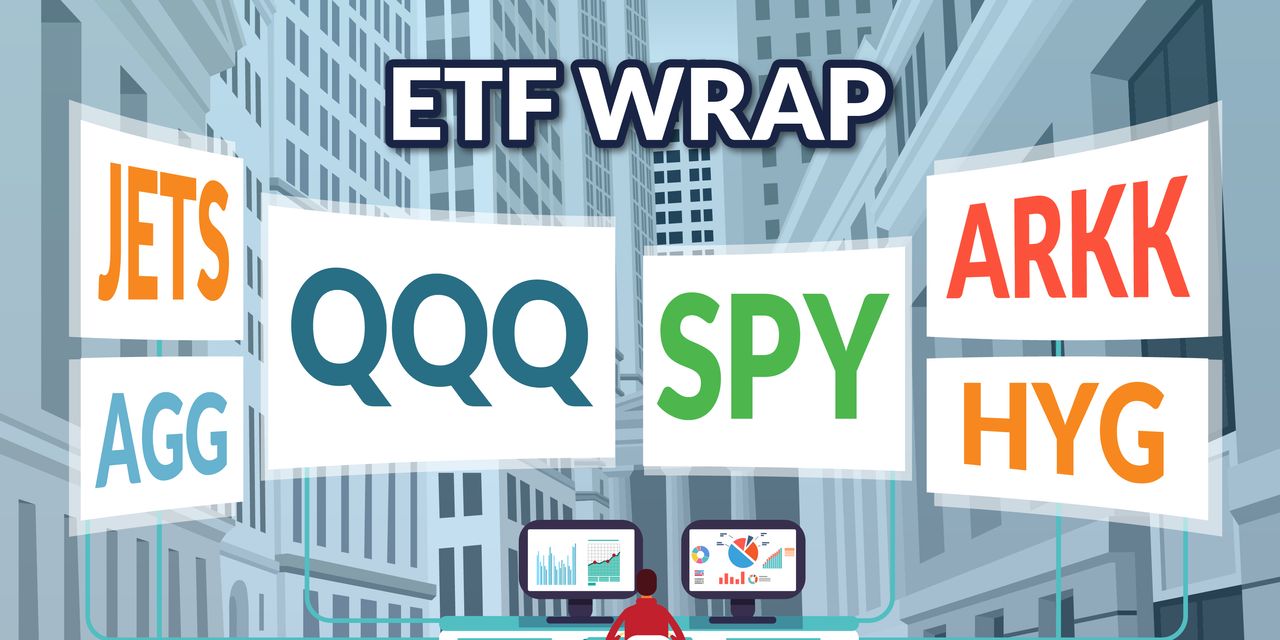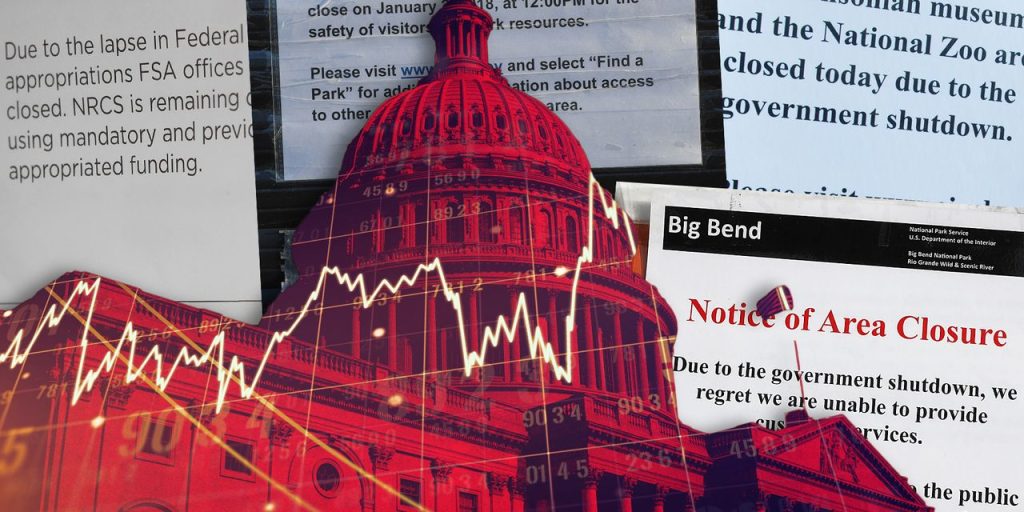Hello! This week’s ETF Wrap digs into junk bond performance and flows.
Please send feedback and tips to [email protected] or [email protected]. You can also follow me on X at @cidzelis and find me on LinkedIn. Isabel Wang is at @Isabelxwang.
Sign up here for our weekly ETF Wrap.
Investors have been fleeing exchange-traded funds that buy corporate junk debt, a risky pocket of fixed income that has been outperforming the total U.S. investment-grade bond market as yields surge.
The jump in U.S. Treasury rates in 2023 have broadly hurt valuations in the bond market, with the iShares Core U.S. Aggregate Bond ETF losing 0.7% this year through Wednesday on a total return basis, according to FactSet data.
But junk bonds have posted gains so far in 2023, with their higher yields helping to absorb a drop in prices. The ICE BofA US High Yield Index had an effective yield of around 9% on Wednesday, according to data on the website of the Federal Reserve Bank of St. Louis.
“You’re getting a lot more carry,” said Steve Laipply, global co-head of bond ETFs at BlackRock, by phone. “That helps cushion price declines.”
U.S. high-yield bonds compensated investors with a 4.33 percentage-point spread over comparable Treasurys as recently as Oct. 6, according to CreditSights data.
The iShares iBoxx $ High Yield Corporate Bond ETF has a total return of around 4% in 2023 through Wednesday, FactSet data show. The SPDR Bloomberg High Yield Bond ETF returned a total of around 4.8% over the same period.
High-yield, or junk, bond ETFs were falling Thursday as Treasury yields rose, after a report on inflation showed that headline consumer prices rose slightly more than Wall Street expectations for September.
Shares of the iShares iBoxx High Yield Corporate Bond ETF
HYG
were down 0.5% on Thursday afternoon, while the SPDR Bloomberg High Yield Bond ETF
JNK
fell 0.6%, according to FactSet data.
The iShares Core U.S. Aggregate Bond ETF
AGG,
which tracks an index of the total U.S. investment-grade bond market including Treasurys, had a slightly larger decline of 0.9% in Thursday afternoon trading.
Earlier this month, the iShares iBoxx $ High Yield Corporate Bond ETF traded more than $10 billion on Oct. 4 to mark its highest daily trading volume since its inception in 2007, a spokesperson for BlackRock said in an email that same week.
That speaks to the fund being an integrated part of credit markets along with the iShares iBoxx $ Investment Grade Corporate Bond ETF
LQD,
said Laipply.
The iShares iBoxx $ Investment Grade Corporate Bond ETF, which has around $29 billion of assets under management, has lost 0.4% this year on a total return basis through Wednesday, according to FactSet data.
The smaller iShares iBoxx $ High Yield Corporate Bond ETF is the largest exchange-traded fund targeting corporate junk bonds, according to Aniket Ullal, head of ETF data and analytics at CFRA Research. The fund has around $13 billion of assets under management, FactSet data show.
Ullal is wary of reaching for yield in the junk market at a time when investors can get attractive rates in the U.S. Treasury market.
“When you got rates so high on sovereign debt, it doesn’t really make sense for people to take on so much credit risk,” he said in a phone interview.
The yield on the 10-year Treasury note
BX:TMUBMUSD10Y
climbed 11.5 basis points on Thursday to 4.710%, while 2-year Treasury rates
BX:TMUBMUSD02Y
rose 6.6 basis points to 5.069%, according to Dow Jones Market Data. Yields on six-month T-bills
BX:TMUBMUSD06M
were even higher, at around 5.56% on Thursday afternoon, according to FactSet data.
While high-yield bond ETFs are up so far this year on a total return basis, investors worry that corporate borrowers of junk bonds are vulnerable in an economic downturn and face refinancing risks.
Read: U.S. corporate borrowers face record refinancing needs as funding costs reach 13-year high, Moody’s says
The iShares iBoxx $ High Yield Corporate Bond ETF has seen $2.5 billion in outflows this year, including $391 million over the past week through Wednesday, FactSet data show. And investors have pulled $3.4 billion from the SPDR Bloomberg High Yield Bond ETF in 2023, including about $942 million in the past week through the same date.
As usual, here’s your look at the top- and bottom-performing ETFs over the past week through Wednesday, according to FactSet data.
The good…
| Top Performers | %Performance |
|
Invesco Solar ETF TAN |
8.0 |
|
VanEck Gold Miners ETF GDX |
7.6 |
|
KraneShares CSI China Internet ETF KWEB |
7.5 |
|
First Trust Natural Gas ETF FCG |
7.2 |
|
SPDR S&P Aerospace & Defense ETF XAR |
7.1 |
| Source: FactSet data through Wednesday, Oct. 11. Start date Oct. 5. Excludes ETNs and leveraged products. Includes NYSE, Nasdaq and Cboe traded ETFs of $500 million or greater |
…and the bad
| Bottom Performers | %Performance |
|
ProShares Bitcoin Strategy ETF BITO |
-2.8 |
|
iShares U.S. Medical Devices ETF IHI |
-2.6 |
|
YieldMax TSLA Option Income Strategy ETF TSLY |
-2.4 |
|
iShares MSCI Saudi Arabia ETF KSA |
-2.4 |
|
Sprott Uranium Miners ETF URNM |
-1.8 |
| Source: FactSet data |
New ETFs
- J.P. Morgan Asset Management announced on Thursday the launch of the JPMorgan Active Bond ETF JBND, an actively managed fund with “a value-driven approach that emphasizes intermediate bonds of the highest quality.”
-
REX Shares said Oct. 11 that it launched the REX FANG & Innovation Equity Premium Income ETF
FEPI,
a fund aiming to provide exposure to “innovative, large-cap technology stocks along with the potential for high monthly income using a sophisticated covered call strategy.” -
YieldMax announced on Oct. 11 the launch of the YieldMax SQ Option Income Strategy ETF
SQY,
which seeks to provide monthly income through a synthetic covered call strategy on Block Inc.
SQ,
-5.02% . -
Goldman Sachs Asset Management has launched the actively managed Goldman Sachs Small Cap Core Equity ETF
GSC,
which began trading Oct. 5.
Weekly ETF reads
Read the full article here







